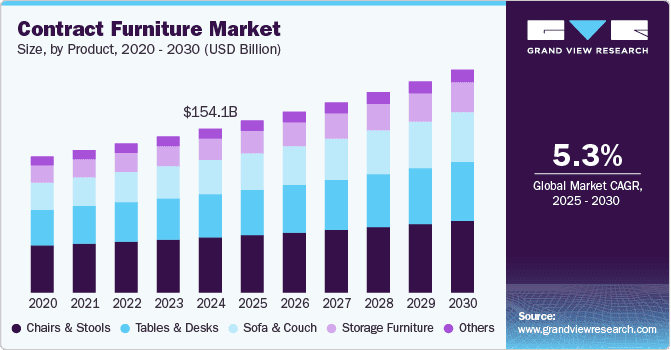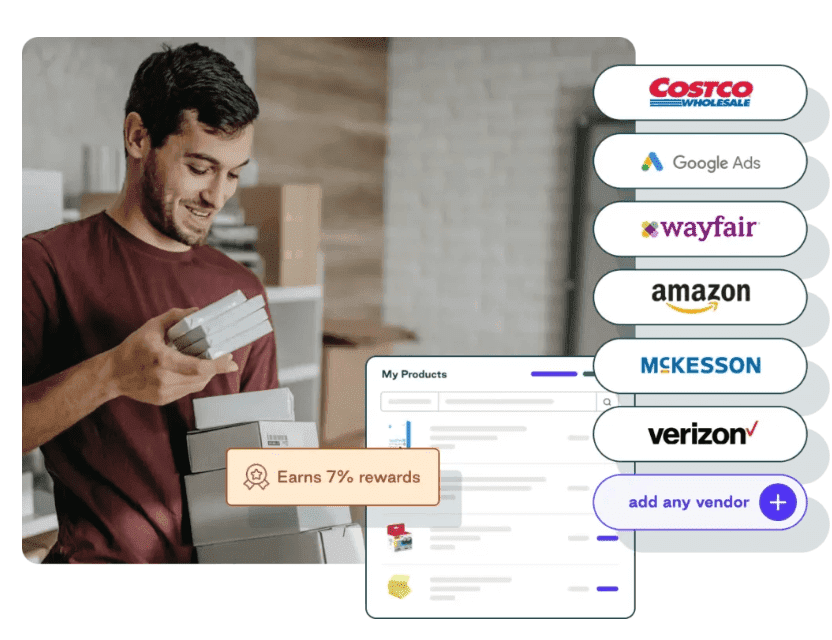Furniture Procurement: How to Improve Process and Save

Furniture Procurement: How to Improve Process and Save
Choosing and purchasing furniture involves more than just filling a room. It's a chance to invest in your team, your customers, and the overall experience within your space. The right furniture—like ergonomic chairs that combat fatigue or comfortable lobby seating that makes visitors feel welcome—can boost employee productivity, customer satisfaction, and brand image.
But traditional procurement practices, like managing invoices, delivery timelines, and vendors, can be time-consuming and inefficient. And whether you're outfitting a corporate office, healthcare facility, or retail space, these challenges can add up fast.
Thankfully, modern furniture procurement doesn't have to be hard. With the right software and automated workflows, you can save time and money while improving operational efficiency and making smarter decisions.
Download the free guide: The Procurement Strategy Playbook for Modern Businesses
Furniture procurement examples

As companies increasingly realize how much furniture can contribute to their success, the contract furniture market is projected to grow at a compound annual growth rate (CAGR) of 5.3% by 2030. While every business relies on furniture to support its goals, each company's procurement strategy should line up with the specific needs of its industry.
Examples of environments with specialized furniture procurement needs include:
- Corporate offices: Corporations often need flexible, scalable solutions, whether for in-person staff or hybrid teams. This could mean everything from standing desks, mobile workstations, and large meeting screens to cozy lobby couches and modern interior design accessories.
- Healthcare and wellness environments: Hospitals, clinics, cannabis storefronts, fitness centers, and other health-related facilities require furniture with unique functionality. Think dental chairs, adjustable treatment tables, or display cases for high-dollar wellness products.
- Finance, consulting, and legal firms: Banks, insurance companies, and law firms typically invest in office furniture that creates a polished, professional atmosphere. This could include high-quality chairs and desks as well as calming artwork.
- Tech companies: Companies in fast-moving tech environments often use modular furniture, standing desks, and custom-built furniture to attract talent and optimize workflows. These items must work for everything from heads-down focus time to annual meetings and brainstorming sessions.
- Hospitality businesses: Hotels, restaurants, and other service-based businesses need stylish, functional furniture that meets internal and external expectations. Commercial kitchen appliances, beds, and decorative paintings all play a big part in shaping employee and guest experiences.
While these may be common use cases and items, procurement isn't limited to ordering desks and coffee tables. It's about matching purchasing decisions with your organization's goals, budgets, and stakeholder needs.
In the past, that meant juggling vendors, performing painstaking manual quality assurance, and organizing a massive amount of data—all to get the basics in place. Thanks to technology, modern furniture procurement is much simpler. With the right tools, you can simplify the process, save time, and stay on budget while creating spaces that support employees and customers alike.
What does the furniture procurement process involve?
Furniture procurement is the process of strategizing, sourcing, purchasing, installing, and paying for the furniture your business needs. It involves teaming up with people across departments—from administration to finance to HR—to ensure all pieces are functional and cost-effective.
Key steps in the procurement process include:
- Identifying your needs: Outline the types of furniture you need, how you'll use them, and whether they need to check certain boxes—like matching brand vibes, being ADA-friendly, or just making daily life easier.
- Setting a budget: Compare your wish list with what you can actually spend, remembering to factor in delivery and installation costs.
- Picking items and vendors: Research product options and potential vendors before issuing purchase orders and formalizing terms. Request proposals, compare quotes, and negotiate terms to ensure ideal pricing and efficient logistics from a vendor with a reliable reputation.
- Managing logistics: Coordinate delivery schedules, inspect items thoroughly when they arrive, set up post-delivery support, and track spending along the way.
Furniture procurement used to be a lot to handle (and still is for teams that don’t use procurement software). One late payment or delayed delivery could easily add unnecessary expenses and derail timelines. With an all-in-one purchasing and payment platform like Order.co, you can modernize procurement by managing all your vendors in one place and automating purchasing workflows to keep projects on time and within budget.
Key steps for efficient furniture procurement
Here's how to run smooth furniture procurement with best practices and technology.
Assess your requirements thoroughly
A full-service furniture, fixtures, and equipment (FF&E) procurement approach can help you make the best decisions for your business. Before you buy anything, dig deep into each piece of furniture’s purpose. Ask yourself questions like:
- Where will the furniture be used, and who will use it? A client-facing space might need different furnishings than an employee break room.
- How many people will use the furniture? Knowing this can help you determine quantity and budget.
- Does the new furniture match your brand and desired experience? Plush leather sofas will be better than rigid wood or plastic chairs if you want to create a welcoming, conversational area.
- What are the safety and accessibility requirements? Remember to think about ergonomic details that support comfort, wellness, and inclusivity.
- Will this furniture still be useful in a year or two? Weigh whether future changes to your workplace or business model might affect your needs.
Rather than trying to answer these questions alone, loop in other leaders and departments. For example, IT can add input for tech-related needs, and HR can flag accessibility must-haves. Together, you can design smart solutions that solve your operational needs across all your unique spaces and multifunctional areas.
Choose partners wisely
A strong vendor partnership can pave the way for increased flexibility, more effective negotiations, and even custom solutions.
First, find vendors with proven experience in your industry. Suppliers familiar with FF&E procurement in your market will be more in tune with your needs and can likely offer useful guidance. Then, make sure those suppliers have transparent pricing, consistent delivery timelines, customization options, and the capacity to scale with your needs.
Finally, review vendors' certifications and values—such as environmental friendliness or fair labor practices—and confirm they have accessible support channels and reasonable product warranties.
With Order.co, you can compare vendors by pricing, timeliness, and service levels in one unified dashboard. The platform provides the real-time data you need to analyze potential partners, make more informed decisions, and get more value from every purchase. Case in point: Clinton Management used Order.co to improve its sourcing strategy, saving $1,200 a month with features like:
- Purchase order creation and supplier management
- Automated reordering based on inventory thresholds
- Sales analytics and demand forecasting
- Invoice management and payment processing
Manage orders and logistics effectively
Requirements? Check. Partners? Check. But that's only the start. Procurement teams still have to handle the rest of the procurement process, including delivery and invoice reconciliation as well as ongoing vendor management.
Without centralized visibility, it's easy to lose track of essential details. Using technology to create a streamlined procurement approach lets you automate workflow approvals, manage multi-vendor orders in a single dashboard, and track your budget across projects. By removing manual tracking and confusing touchpoints, you minimize delivery errors, increase accountability, and free up time for more strategic priorities.
Track performance and improvements continuously
As you make furniture purchases, organize timely deliveries, and assess order quality, don't let your learnings go to waste. Use procurement key performance indicators (KPI) to evaluate your vendors and guide continuous improvements.
Consider metrics such as:
- On-time delivery rate
- Supplier lead time
- Cost savings and cost avoidance
- Quality issues
- Supplier risk score
- Maverick spend percent
Use this information to refine your procurement strategy by adjusting volumes, renegotiating terms, fine-tuning internal workflows, and uncovering insights to improve outcomes. Order.co lets you set up personalized dashboards that track metrics in real time, helping you increase savings, satisfaction, and efficiency.
3 best practices for quality and cost savings
Speed and accuracy are essential to successful procurement, but ultimately, the goal is to get the highest-quality choices within your budget at the lowest long-term costs.
Here are three practices to ensure your procurement processes deliver the most value.
1. Use data for vendor evaluation
When choosing a supplier, reputation matters. Familiarize yourself with possible partners' delivery rates and reliability, return policies, cost per item and prices over time, and customer service responses.
Order.co makes it easy to size up vendors, organizing key data points in one place so you can quickly spot the best supplier for your needs.
2. Negotiate flexible contracts
You’ve probably heard the terms vendors and partners used interchangeably, but they aren't necessarily one and the same. To transform a vendor into a partner, you have to treat procurement as an ongoing relationship rather than a one-time transaction.
Fairness, clarity, and transparency are key ingredients in realizing the full value of a vendor partnership. Choose a vendor with flexibility in areas like purchase volumes and related discounts, contract terms, delivery timelines, and evolving product lines.
Of course, this can feel impossible to secure if you’re dealing with a mountain of invoices and maverick spending. That was the case when WeWork partnered with Order.co to automate purchasing and invoicing. The coworking company reduced its yearly invoice count from over a million to just 3,000 a month, freeing up time and resources to focus on building stronger vendor relationships.
3. Adopt sustainable standards
Many customers and employees care about how responsibly a company operates. If you want to grow, your environmental impact and reputation matter.
Find a partner that aligns with your sustainability standards. Depending on your company's core values, this could include choosing vendors that provide recyclability, low-emission manufacturing, or buy-back programs to give furniture a second life.
With a procurement platform like Order.co, you can easily identify suppliers that meet your sustainability priorities.
Streamline your furniture procurement approach with Order.co

Furniture procurement might seem complex, but it doesn't have to be. With the right tools, modern procurement teams can easily manage everything from purchasing and deliveries to payments and vendor relationships. That means fewer headaches, more control, and better results.
Order.co's all-in-one procurement platform simplifies the entire process with a user-friendly and intuitive dashboard that helps you find the right vendors, manage purchases and orders in one place, and maintain complete control of payments and budgets.
“Even before signing on with Order.co, I had been so impressed with how much they simplify the purchasing and payment process. I call Order.co ‘My Baby’. The ability Order.co has to mold to what your company needs is ideal.”Kyle Ingerman Finance Transformations Senior Manager, WeWork
Schedule a demo today to see how Order.co can make your procurement more efficient, budget-friendly, and easier to manage.
Get started
Schedule a demo to see how Order.co can simplify buying for your business.Schedule a demo today to see how Order.co can make your procurement more efficient, budget-friendly, and easier to manage.
"*" indicates required fields



